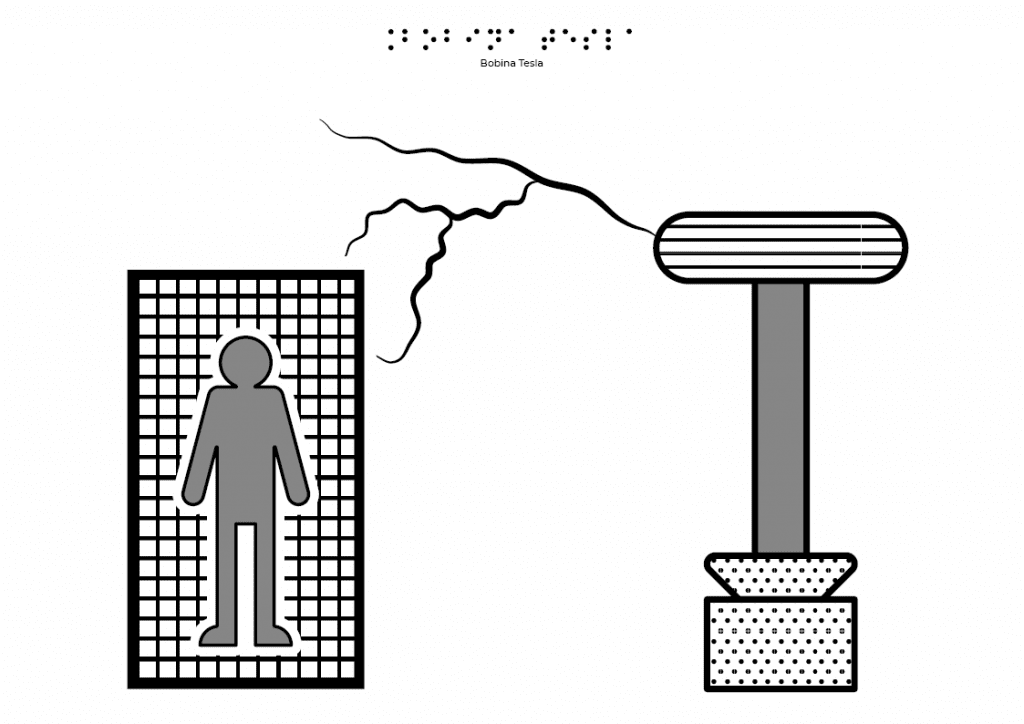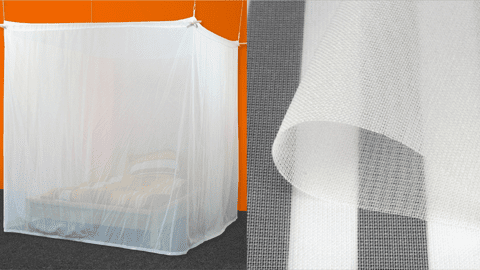Taking proper safety precautions can allow you to examine the passage of charges, the formation of electric fields, and other aspects of electricity. Performing experiments has been made safer by using protective gear for scientists since the invention of electricity in physics. Faraday cages, based on this information, could protect individuals from electrocution.
The interior of a Faraday cage is free of electric charges or radiation because the Faraday cage disperses the charge or radiation around the cage’s perimeter. Essentially, the charge stays on the outside of a Faraday cage since it is a hollow conductor.
We are surrounded by a device that transmits EMF radiations that are very harmful to the human body. Even when we are sleeping, we have our phones by our beds. In these kinds of situations, a Faraday Cage could be handy.
Also, there are numerous exciting applications for this essential function in today’s electrically congested and technologically dense society. After realizing the number of benefits a Faraday cage can provide even while you sleep, you must be wondering how to build a Faraday cage to sleep in?
Well, it is straightforward, and that’s why e have come here to clear all your confusion. Even though Faraday’s innovation would finally come to fruition, its genesis may be traced to a much earlier era. As far as I know, no one else has come up with this idea before. See for yourself in the following paras!
What is a Faraday Cage?
A Faraday Cage, also known as a Faraday Shield, is a protective container used to protect objects from electromagnetic fields (both static and non-static). The term static electricity comes from the fact that the charges are at rest. In effect, they build up on the surface of a certain insulator.
Electrons move within a conductor in non-static or current electricity. Faraday cages can shield their contents, or even their occupants, from the effects of both. They can be manufactured from a continuous conductive material covering or a fine conductive material mesh.
Tips
As soon as an external electric field is applied to the cage, it acts as if the charge were placed inside. To neutralize the surface, the cage needs to be grounded. As a result, the field does not flow through the material because there is no voltage on the other side. As electrostatic charges are induced on the surface, the charges are transferred to the other side of the substance.
Also read: How to Make a Faraday Cage Room
Faraday Cage History
Ben Franklin was the first to discover Faraday cages, even though Michael Faraday was the first to invent them. Sometime between 1755 and 1756, his experiment involved using an electrically charged silver can descend an uncharged cork ball on a silk thread tied to the can (non-conductive).
A cork ball was discovered to be immediately pulled to an electrified surface when he dangled it near the can’s edge, but when he lowered it into the can, it had no impact. In 1836, physicist Michael Faraday discovered that electrical conductors only store charge on their surface when they are charged.
Electrostatic generators were used to charge the metal foil, then placed in a room and evaluated. Once inside the room, he used an electroscope to confirm that there was no charge. The charge was only able to penetrate the foil’s surface.
Further Tests
However, it was his famous ice bucket experiment that boosted the concept. The experiment followed Franklin’s lead by lowering a charged brass ball into an aluminum pail, as he had done in his experiments (usually used to hold ice, which is where the name comes from).
Results were identical to Franklin’s – the electric charge inside the conductive shell expelled an equal charge, and the charge then occupied the entire surface. This experiment was the first accurate quantitative measurement of electrostatic charge, which later led to the development of Faraday cages.
How to Build a Faraday Cage to Sleep In
If you’d like to test whether or not your Faraday cage works, you’ll need metal sheets (copper or aluminum are good choices), tape, scissors, and some cardboard containers. For a chicken wire, Faraday cage, aluminum, copper, or chicken wire work well.
Because of the high level of metal-on-metal contact required by Faraday cages, a mesh structure may be an ideal choice. Turn the container into a Faraday cage or shield by transforming it into, for example, a protective box. To protect your container, cover it with foil or metallic sheets.
Ensure that the metal sheets in the cage are in constant contact with one another. Cut a hole in the screen to allow you to view out of the cage. Consider the wavelength of the electromagnetic energy you’re trying to stop from entering.
- Cut a 10-by-10-inch screen metal mesh square to size
- In the same way, cut five 8-inch-long pieces of cardboard or wood
- Attach the metal mesh to the wood or cardboard using staples, tape, or another form of attachment
- Connect the strips so that they completely round the mesh, about 5 to 6 inches apart
- Create a Faraday cage by forming the material into a container
Faraday Cage Applications
Chemists use Faraday cages to keep external noise from interfering with their tests. Faraday bags, Faraday cages composed of flexible metallic cloth, are used by digital forensics experts to prevent the remote erasure and tampering of criminal evidence. Faraday cages protect computers against snooping by shielding them from electromagnetic radiation.
Passengers in cars and planes are protected from hazardous electric charges by Faraday cages. People and items are shielded from lightning strikes and electrical discharges using Faraday cages, commonly employed to prevent radio transmitter interference. Appliances in the home also rely on them.
Microwaves contain shields to prevent waves from escaping their interior, whereas TV cables decrease external electromagnetic interference to produce images. When it comes to Faraday cages, different metals have different conductivities. Various alloys can be created from copper, including brass and phosphorous bronze, for various specific applications.
Aluminum is an excellent material because of its lightweight and outstanding conductivity, although it rusts and cannot be soldered well. Additionally, the cost, corrosion, thickness, malleability, blocked frequencies, and how the materials themselves can be shaped into a cage are other considerations when developing Faraday encasings.
Microwave
You can locate a real-life Faraday cage in your kitchen. Your microwave oven’s metal casing functions as a Faraday cage, preventing microwaves from leaking out of the oven into the surrounding environment.
EMI shielding for Electronic Equipment
It is critical to shield electronic devices from electromagnetic radiation emitted by nearby electronic devices. As a Faraday cage, the PVC jacket of coaxial cables for television shields the interior conductors from external electromagnetic interference and prevents RF leakage.
Protective Gear for Electricians and Linemen
Faraday cages are nothing more than protective suits worn by men who work in hazardous situations. While working near high voltage power lines, these costumes are designed to keep workers safe from getting electrocuted.
MRI (Magnetic Resonance Imaging)
In MRI scan rooms, Faraday cages are also employed to prevent external radio frequency interference from distorting patient data.
Lightning Safety
Passengers within a car or plane’s metal cabin operate as a faraday cage to keep out dangerously high electric charges, such as those caused by lightning.
Benefits of Using Faraday Cage
Shielding EMF to Protect Health
In the late 1800s, the invention of the light bulb and the electrical infrastructure to support it ushered in a new era of electromagnetic radiation (EMR). However, the level of electromagnetic field (EMF) it emitted was insufficient to cause significant harm to people’s health. Till about 1990, this was indeed true.
After that, there was 2G, a type of network infrastructure that allowed for wireless communication and text messaging to coexist in one system. However, it also represented the beginning of people being exposed to much higher EMF emissions, a giant stride forward for humanity.
We were also exposed to a high level of electromagnetic radiation (EMF) when 2G mobile phones became commonplace. After 2G, the tech world kept advancing and adding new EMF sources to the list, making the pollution in our environment dense and ever-growing.
Shielding EMF to Protect Equipment
Why is it necessary to turn off or put your phone in airplane mode when flying? Due to the high EMF emissions from your cell phone. Interference occurs when the EMFs from many sources are mixed, resulting in a subpar network service.
When flying, this can lead to a potentially deadly situation. Some places are when turning off your cell phone isn’t an option, such as on flights where the comm systems are vulnerable to interference.
Faraday Cage House
In a Faraday cage house, you may shelter yourself from electromagnetic interference by using various materials. Magnetron resonance imaging (MRI) can protect patients from the harmful effects of electromagnetic radiation by employing copper.
Alloys like brass, phosphorous bronze, and beryllium copper, which have better conductivity, can be easily made by mixing them with other elements. Using pre-tin plated steel is a cost-effective way to keep lower frequencies from entering. Carbon steel is an excellent choice for blocking frequencies that other alloys and elements fail to do.
To prevent corrosion, these materials are commonly coated in the tin. Corrosion resistance is a common attribute of copper alloy. Even though one must examine its galvanic corrosion and oxidation qualities, aluminum’s superior strength-to-weight ratio and high conductivity make it an excellent choice for many applications.
Electromagnet vs. Magnet
An electromagnet can only reveal its electrical and magnetic properties when current is passed through it. Permanent magnets, on the other hand, remain magnetic no matter what. In the absence of an external magnetic field or current source, a permanent magnet’s chemical and physical compositions allow charge to flow freely through the material, resulting in a magnetic field even when there is no external current or magnetic field.
When an electric current flows through a coil of wire, it transforms into an electromagnet. Devices that use a tiny coil of wire wrapped around a magnetic object to emit magnetic fields are called solenoids. An electromagnetic field can be generated when a solenoid is connected to an external battery, as depicted above.
In contrast to permanent magnets, the strength of an electromagnet is determined by the amount of current that passes through it rather than the type of material used. As the temperature rises, the magnetic qualities of a permanent magnet can be lost, such as the capacity to generate a magnetic field.
They can be re-magnetized by changing their composition or placing them in a magnetic field of appropriate strength when they are demagnetized. If no electric current or electric field is present, an electromagnet will lose all its magnetic properties.
EMF Danger Levels
Children should not use neodymium magnets. It is possible to inflict significant internal harm to the intestines and stomachs if one swallows magnets, as the magnets’ force can penetrate the tissues of these organs. When handling powerful magnets, wear gloves to protect your hands. Magnets should not be allowed to come into contact with one another.
Keep the magnet out of harm’s way so that it retains its magnetism and structural integrity. To separate two magnets stuck together, you can slide one against the other in a sideways motion. Maintain a safe distance between magnets to avoid them from interfering with each other. You can avoid the EMF hazard levels of electromagnets by using these approaches.
Conclusion
Scientists and doctors have voiced concerns about the safety of magnets as their usage in medicine, and medical research has grown. Human health has been protected as a result of these measures. It would help if you took extra precautions when employing magnets in a clinical setting since the safety of human health is far more critical than the safety of electrical items.
Doomsday circumstances or not, Faraday cages are likely to play a role in your day-to-day existence. Safety, luxury, convenience, and the pursuit of ever-more-exciting technical advancements are all served by these cages, which harness a fundamental principle of physics.
We hope we now must have convinced you how these EMF radiations are so harmful to your body. Our guide on how to build a Faraday cage to sleep in will surely help you to build one and keep you safe all the time.




